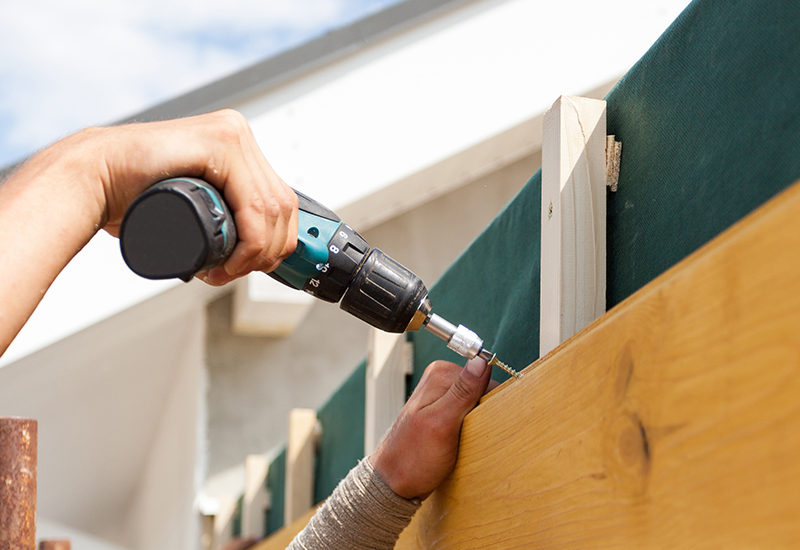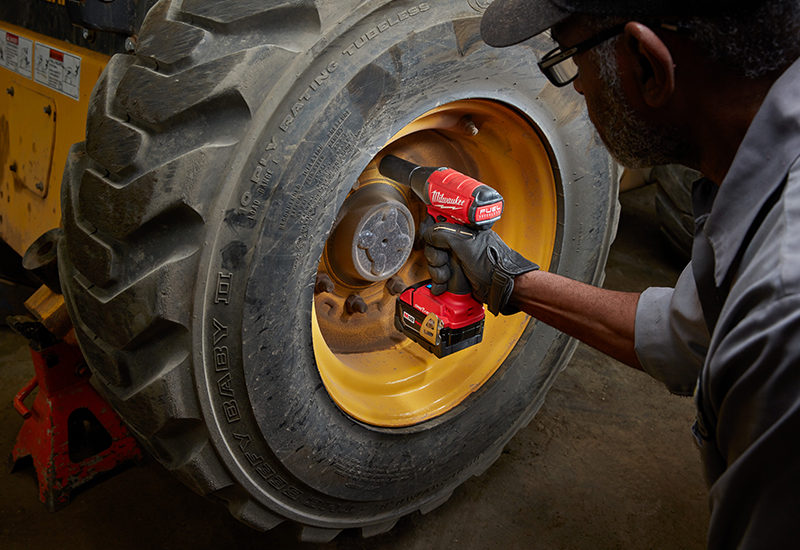
From heavy duty construction to fine woodworking, power drills make almost any job easier. These versatile tools adapt to the task at hand thank to almost countless bits. Among power drills, cordless drills are some of the most portable and versatile, and recent advances in battery technology have made them more powerful and efficient than ever. Many types of cordless drills exist, so you’ll need a firm understanding of which one is best for your need before you buy. Power and performance can vary widely between products, and as versatile as cordless drills are, some drills are better than others in certain situations.
The Motor
 Let’s start by looking at raw power. The voltage rating of a given drill is a good predictor of overall power and an excellent point for cordless drill comparison. A 12-volt drill is suitable for lighter drilling and fastening jobs. It’s smaller and more portable than most 18 or 20-volt drills that are designed for tougher materials, longer fasteners and larger bits. Make sure to check the max rpm of a drill before buying. For example, a drill that runs at 1500 rpm is an average maximum. Anything with less than 1500 max rpm will not be a good choice for big jobs. Many top-rated cordless drills feature brushless motors, and these can achieve a higher rpm with less electricity, making them more powerful, durable and energy efficient.
Let’s start by looking at raw power. The voltage rating of a given drill is a good predictor of overall power and an excellent point for cordless drill comparison. A 12-volt drill is suitable for lighter drilling and fastening jobs. It’s smaller and more portable than most 18 or 20-volt drills that are designed for tougher materials, longer fasteners and larger bits. Make sure to check the max rpm of a drill before buying. For example, a drill that runs at 1500 rpm is an average maximum. Anything with less than 1500 max rpm will not be a good choice for big jobs. Many top-rated cordless drills feature brushless motors, and these can achieve a higher rpm with less electricity, making them more powerful, durable and energy efficient.
The Clutch
Especially when using a powerful drill, an adjustable clutch is an important cordless drill feature to consider. Drilling holes requires a much higher rpm than driving fasteners, and trying to drive a screw too quickly can sink it too deep or split your material. That’s why many types of cordless drills include a two-speed switch specifically designed for switching between drilling and driving tasks.
Some types of cordless drills also include an adjustable clutch with 20 or more speeds, allowing for fine control over torque. This style is especially useful for driving small or delicate fasteners into thin material, where over sinking is a serious concern. Choosing one drill with a good clutch means you’ll be able to do a broad range of tasks with a single tool.
The Chuck
One of the cordless drill features you’ll interact with most often is the chuck. This is the part of the drill that securely holds the bit while you work. A number of different chuck designs exist, and each has its own unique uses.
Keyless Chucks
The most common types of cordless drills use keyless chucks, and these make use of three or more metal fingers to tightly grip a bit. These can be tightened by hand and are good for general purpose drilling and driving because they hold almost any bit. Make sure to check the maximum and minimum bit sizes for your keyless chuck, as this can vary significantly from drill to drill.
Hex Chucks
Quick connecting hex chucks are an innovative cordless drill feature specifically designed to hold hexagonal bits, and the streamlined design makes swapping out bits extremely efficient. They are ideal to drive long screws or when the task will place extra stress on the bit. The chuck grips the bit tightly on all six sides, preventing it from slipping, falling out, deforming or stripping the screw, which is why some top-rated cordless drills use hex chucks.
These chucks are primarily found on impact drivers and other cordless drill drivers. Their main drawback is that they only work with hexagonal bits, so you’ll still need a standard keyless chuck for some jobs. Drills with hex chucks are often sold in combination with traditional keyless chuck drills, to give you the best of both types of cordless drills.
Other Specialized Chucks
Some types of cordless drills allow you to swap out chucks for specific tasks, such as right angle drilling or offset drilling. Specially designed right angle drills also exist for this purpose. This can be especially important in cabinetry and other installation jobs where fasteners may be difficult to reach with a standard drill.
The Battery
 When making a cordless drill comparison, one of the primary concerns is battery life. Right now, there are two types of batteries available on the market. Nickel-cadmium batteries are the older and cheaper technology. The downside is that they tend to lose charge even when not in use, and can discharge completely in as little as two months when stored.
When making a cordless drill comparison, one of the primary concerns is battery life. Right now, there are two types of batteries available on the market. Nickel-cadmium batteries are the older and cheaper technology. The downside is that they tend to lose charge even when not in use, and can discharge completely in as little as two months when stored.
On the other hand, lithium-Ion batteries are the most modern option and utilized in practically all of the top-rated cordless drills. Not only are they smaller and lighter than nickel-cadmium batteries, but they also charge faster, discharge slowly and can repeatedly be recharged without losing their effectiveness.
Pro tip: On almost every level, lithium-ion batteries are the smarter choice. Whatever battery type you choose, it’s wise to pick a battery design that will work with your other cordless tools, so that you can power your whole shop with the same batteries.
The Material You’re Drilling
The type of cordless drill you choose will depend largely on what material you’re using. For woodworking, you’ll want at least one standard cordless drill. Ideally it’s good to have a smaller drill (say, 12 volts) for driving and drilling small pilot holes. Purchase a larger one (18 to 20 volts) for boring deep holes, using a spade bit or hole saw, and so on. A wood drill will also work for drywall and acrylic.
When working with metal, you’ll want as much power as you can muster, and it’s also wise to invest in carbide-tipped bits that prevent premature dulling. Most types of cordless drills are only really suited for drilling light metal. For heavier applications, you may need a metal drill press. When drilling through masonry, cordless hammer drills are the best choice. Their high-speed hammering action assists a spinning masonry bit to fragment and bore through concrete, stone and more. Specialized bits also exist for glass and tile.
Conclusion
No matter the job, there’s a type of cordless drill out there that’s right for you. Be sure to pay particular attention to the voltage, rpm and motor type. Consider what you’ll be using the drill for, and look for a variable speed drill if versatility is important to you. Strongly consider purchasing a drill that uses Lithium-Ion batteries, as they add immense utility to all cordless tools. Lastly, consider the materials you’ll be working with, and any unique challenges you may encounter on the job, and then invest in the equipment and bits to help you succeed. A cordless drill comparison is easy and cordless drill features are what help you get a tool that’s exactly right for you.





One Comment
Anu
January 25, 2017 at 2:10 amGreat article & explained very welll.